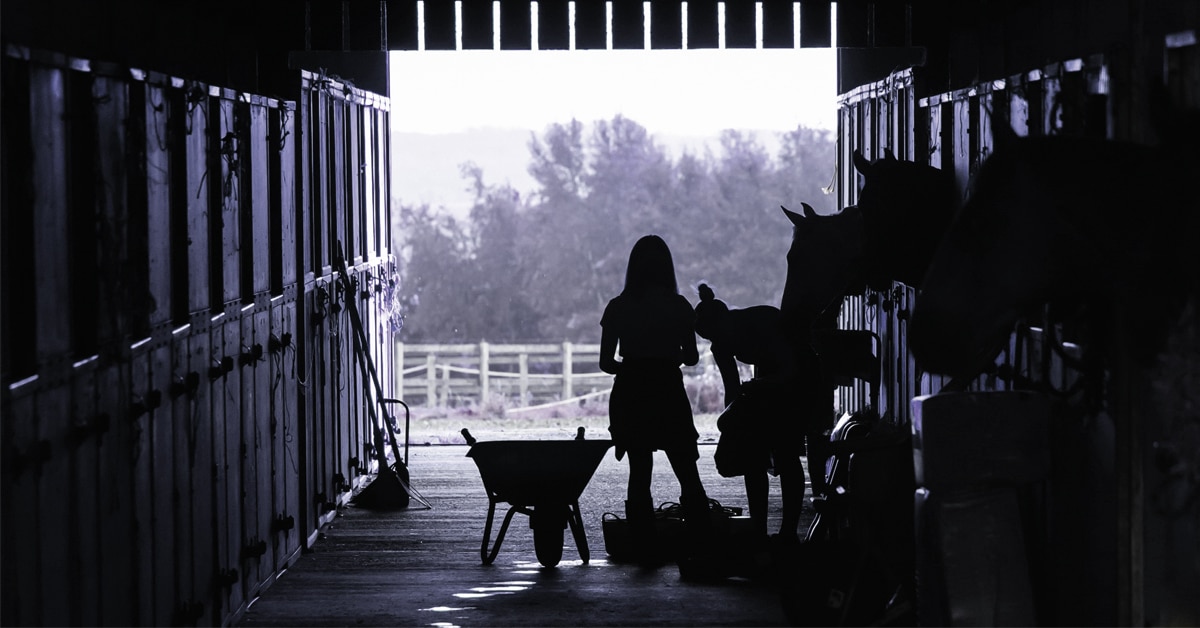Workplace Safety & Prevention Services has released the following guidelines for agricultural workers. Note: This is not a legal document and employers are advised to seek legal advice.
OVERVIEW
Employers and constructors have obligations to protect workers from hazards in the workplace as set out in the Occupational Health and Safety Act (OHSA) and its regulations and the directives coming from the Chief Medical Officer of Health.
Workers should raise any concerns to their:
• supervisor
• joint health and safety committee
• health and safety representative
This will help ensure the employer has taken all reasonable precautions.
Ontario is currently in the midst of a global pandemic. While the COVID-19 situation is changing rapidly, the legislation and regulations used to govern Ontario’s workplaces are not.
Under Ontario law, employers have the duty to keep workers and work sites safe and free of hazards. Workers have the right to refuse unsafe work. If health and safety concerns are not resolved internally, a worker can seek enforcement by filing a complaint with the ministry’s Health and Safety Contact Centre at 1-877-202-0008. Failure of the employer or constructor to comply with the OHSA and its regulations could result in a stop-work order upon inspection by the Ministry of Labour, Training and Skills Development.
BEST PRACTICES
We know that every workplace is unique. That makes it so important that every workplace assess the functions performed by their workforce to ensure they take action to protect workers against hazards presented by COVID-19.
Things like minimizing contact with droplets, keeping surfaces and objects clean, and preventing contact with potentially infected people –these are all critically important measures.
We have provided some protection advice below for your consideration. Please keep in mind that introducing any new protective measures should be done as part of a full review of other workplace hazards — not just COVID 19 alone. We want to ensure we enhance our safety, not cause other issues.
Some workplaces already have some existing controls in place that may help reduce the risk of exposure to workers, so regular ‘check-ins’ on how controls are helping is highly recommended.
RECOGNIZE HAZARD/ASSESS RISKS
For agriculture workers we recognize that you will have contact with co-workers and the public, and contact with surfaces including animals, produce, products, material handling and transportation equipment as you go about your work. You could potentially come in contact with droplets from these interactions.
Take a look at where you might minimize those risks within your workplace. Consult public health information to learn more about the symptoms of COVID-19 infection and ensure that you and your co-workers stay home if you or they have symptoms. Employers may also wish to reach out to their local public health unit to assist with planning.
Take a look at the controls below to see how they may assist you.
CONTROLS
Already existing controls may help to reduce the risk of exposure to workers (e.g. following food practices required by the Local/Provincial Health Unit and food safety practices enforced by the Canadian Food Inspection Agency).
To protect yourself from some of these hazards consider the following options:
• Ensure farm entry is limited to personnel performing essential activities (i.e. those required for the care and wellbeing of the farm and farm animals, employees and facilities, as well as individuals carrying out inspections for regulatory functions)
• Pre-authorized visitors to the farm (e.g. feed delivery, seed delivery, milk truck, veterinarian, farrier, etc.) should call ahead and schedule a meeting or drop-off time. Limit the number of visitors at any one time to reduce potential interactions.
• Screen visitors prior to entry into the site for signs of illness and restrict entry. Ensure visitors adhere to the following practices while on site.
• Designate and provide signage for a specified area where interactions (e.g. drop off, pick-up, service) will take place.
• Limit face-to-face contact wherever possible. Always ensure a minimum distance of two metres between yourself and others. Avoid physical contact such as shaking hands or hugging.
• Limit physical signature requirements and utilize online and/or phone transactions wherever possible.
• People who are sick or have signs of illness (e.g. fever, coughing, sneezing, runny nose, tiredness, shortness of breath) must self isolate, notify their employer and call a doctor or healthcare provider*. Know your sick leave policy.
• Also notify your employer if you or a family member;
– Has travelled outside Canada within the previous 14 days
– Is ill with flu-like symptoms
– Has been in close contact with anyone who has tested positive for COVID-19.
If any of these conditions are present, these individuals must stay away from all drivers or suppliers. They must maintain self-isolation and avoid being present for loading or unloading.
• Limit the number of people in one space so that they can distance themselves from each other by:
– Staggering shifts and break times
– Practicing physical distancing during breaks
– Not entering work areas where 2 meter distance cannot be maintained
– Consider limiting the number of entry points, using floor markings to show distance to be kept apart and desired people flow
– Consider changing the work layout
• Try to limit the number of employees using farm equipment. If possible, assign each employee to their own piece of equipment (e.g. tractor, truck, etc.).
• Regularly clean and disinfect:
– Frequently touched surfaces (e.g. workstations, countertops, fridge/freezer doors, steering wheels, hand tools, handles, light switches, doorknobs, etc.);
– Entry points to farm structures, common spaces, breakrooms, bathrooms and showers, between uses, and at the end of the day;
– Farm equipment, tools, and machinery.
• For any soiled uniforms, laundry etc. , minimize shaking and disturbance; If possible, arrange to ensure the laundering of items using the warmest appropriate water setting for the items and dry items completely and clean and disinfect hampers or other carts for transporting laundry and sanitation equipment.
• Improve fresh air intake/air circulation with open doors, windows or fans. Increased airflow can reduce contaminant build up.
• Install barriers or partitions between yourself and other, where close contact is necessary. For example, putting up barriers like “sneeze guards” around desks or workstations close together.
• Have all employees and visitors wash their hands thoroughly before entering the facility, after contact with others or with surfaces others have touched. Be sure to include handwashing before breaks, and at shift changes. Keep an adequate supply of soap, paper towels etc.
• Use good hand washing techniques, (minimum 20 seconds) and avoid touching your face. Use paper towels instead of using an air dryer for hand drying. Extra handwashing is a good idea for everyone – and when that’s not possible, a good hand sanitizer should be used frequently.
In addition to the above recommendations for your workplace, if physical distancing between people (2 metres) is not possible you may need to consider Personal Protective Equipment (PPE). PPE is only effective if people wear it correctly. Ensure PPE training includes the fit, use, care, putting on and taking off, maintenance, cleaning and limitations of the PPE.
Some examples of PPE considerations for agriculture workers include:
• Gloves – single use gloves can help limit contact with certain surfaces, products, etc. Set up practices for suitable disposal or change when soiled. Be sure you consider other hazards that may be present in the workplace before introducing gloves – in some cases, gloves can be an ‘entanglement’ hazard and should not be worn.
• Goggles or Face Shields –can help with barriers and separation too. They should be assigned to people and not shared, but can be used regularly if kept clean. Be sure to have that considered if you determine you’ll use them.
EVALUATION
COVID 19 has presented all of us with challenges we have never seen before. It’s important to consider that any of the adjustments we are making today, may need further refinement tomorrow. Look at preventative measures on an ongoing basis, and adjust them if they are not working well enough or causing other issues. For example, are people doing what they’ve been asked to do? If not, what is preventing them from doing so? If necessary, make adjustments and improve.
Bottom line? Plan to make regular check-ins part of your COVID 19 prevention plans.
* For the most up to date information on how individuals can protect themselves and what to do if they suspect they may be at risk, please visit Ontario.ca/coronavirus.
RESOURCES
Stay updated with daily government updates on COVID-19:
Government of Ontario
Government of Canada
Public Health Ontario
NOTE: This document is intended for informational purposes only to provide an overview of the potential hazards posed in the workplace due to COVID-19. It is not intended as medical advice, to provide a comprehensive risk assessment for all workplaces, or to replace any legislated workplace safety obligations. Due to the ongoing evolution of the situation in Ontario and around the world, this document may be used as a guide for Employers in addition to guidance delivered by public health authorities such as the World Health Organisation (WHO), Ontario Ministry of Health, Public Health Ontario and the Centres for Disease Control and Prevention (CDC).” Any use which is made of this document by any Employer, or any reliance on or decisions to be made based on it, are the responsibility of the Employer. WSPS and its partners, officers, directors, employees, agents, representatives, suppliers and service providers accept no responsibility for any errors or omissions in content or for damages of any kind or nature suffered by any Employer or any third party as a result of use of or reliance on this communication.
More from News:





